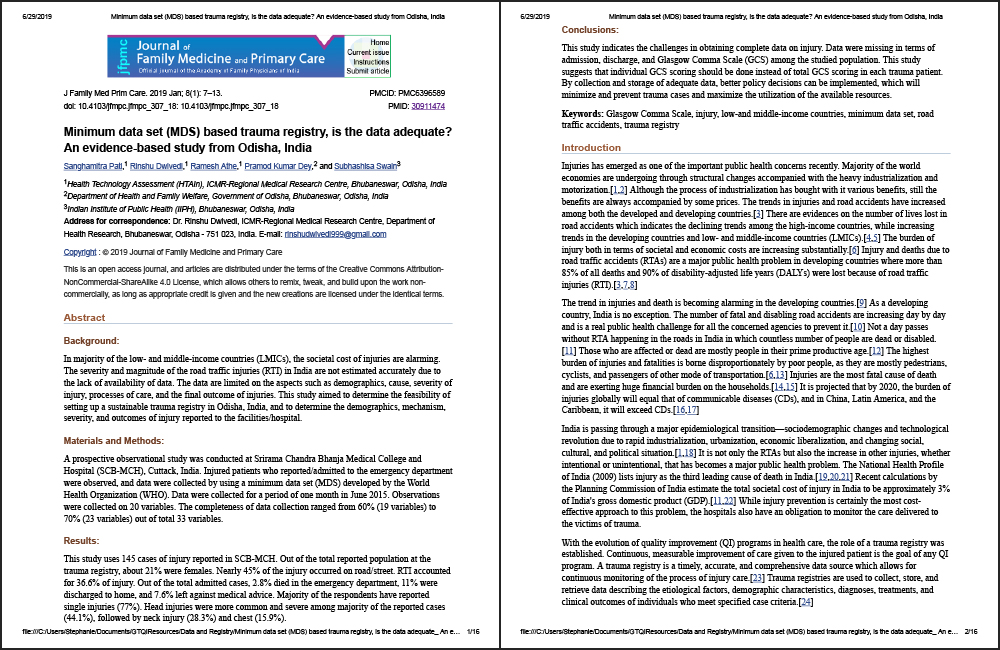
Minimum Data Set Based Trauma Registry
Background: In majority of the low- and middle-income countries (LMICs), the societal cost of injuries are alarming. The severity and magnitude of the road traffic injuries (RTI) in India are not estimated accurately due to the lack of availability of data. The data are limited on the aspects such as demographics, cause, severity of injury, processes of care, and the final outcome of injuries. This study aimed to determine the feasibility of setting up a sustainable trauma registry in Odisha, India, and to determine the demographics, mechanism, severity, and outcomes of injury reported to the facilities/hospital.
Materials and Methods: A prospective observational study was conducted at Srirama Chandra Bhanja Medical College and Hospital (SCB-MCH), Cuttack, India. Injured patients who reported/admitted to the emergency department were observed, and data were collected by using a minimum data set (MDS) developed by the World Health Organization (WHO). Data were collected for a period of one month in June 2015. Observations were collected on 20 variables. The completeness of data collection ranged from 60% (19 variables) to 70% (23 variables) out of total 33 variables.
Results: This study uses 145 cases of injury reported in SCB-MCH. Out of the total reported population at the trauma registry, about 21% were females. Nearly 45% of the injury occurred on road/street. RTI accounted for 36.6% of injury. Out of the total admitted cases, 2.8% died in the emergency department, 11% were discharged to home, and 7.6% left against medical advice. Majority of the respondents have reported single injuries (77%). Head injuries were more common and severe among majority of the reported cases (44.1%), followed by neck injury (28.3%) and chest (15.9%).
Conclusions: This study indicates the challenges in obtaining complete data on injury. Data were missing in terms of admission, discharge, and Glasgow Comma Scale (GCS) among the studied population. This study suggests that individual GCS scoring should be done instead of total GCS scoring in each trauma patient. By collection and storage of adequate data, better policy decisions can be implemented, which will minimize and prevent trauma cases and maximize the utilization of the available resources.
Specifications
- Last Updated: 2019
- Author(s): Sanghamitra Pati, Rinshu Dwivedi, Ramesh Athe, Pramod Kumar Dey, and Subhashisa Swain
- Category: Registry Basics
- Tags: 2019, English, Journal of Family Medicine and Primary Care
PDF Documents
Please login to access file downloads.
